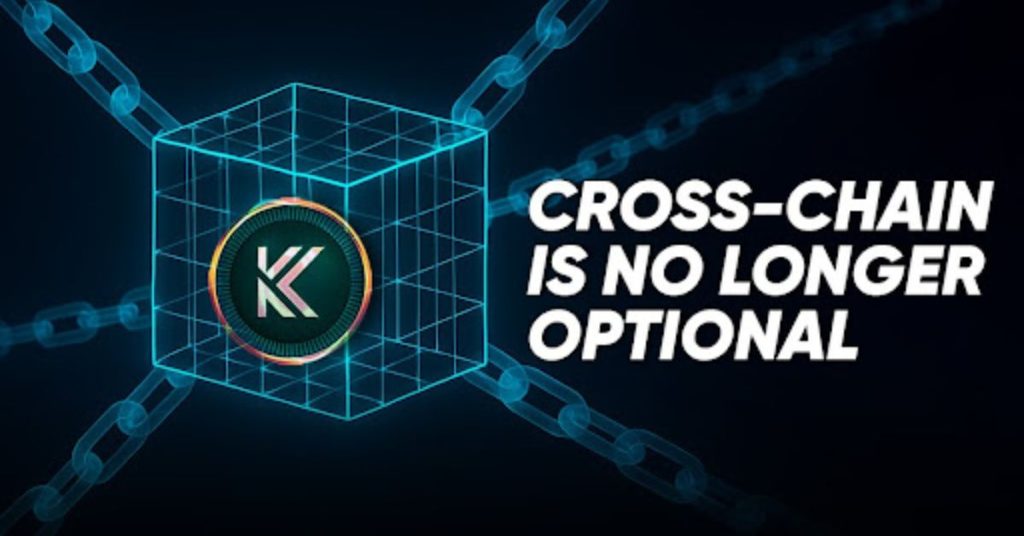Crypto’s Interoperability Crisis: Why Every Chain Must Talk—Or Die Trying
Blockchain bridges aren’t just nice-to-have anymore—they’re the only thing standing between crypto and a Tower of Babel scenario. Here’s why 2025’s make-or-break battle is getting chains to play nice.
The Balkanization Problem
Solana whales can’t touch Bitcoin’s liquidity. Ethereum DeFi sits siloed from Cosmos apps. This isn’t just inefficiency—it’s a trillion-dollar roadblock to mass adoption.
The Bridge Builders Strike Back
From LayerZero’s omnichain dreams to Chainlink’s CCIP, new protocols are cutting through the noise. But with every ’wrapped asset’ hack, the old guard of TradFi snickers about ’SWIFT but with more exploits.’
The Bottom Line
Interoperability isn’t some academic debate—it’s the difference between crypto eating traditional finance or choking on its own fragmentation. The chains that won’t talk? They’ll be talking to themselves.

The Fragmented Blockchain Landscape Is Holding Web3 Back
Crypto is no longer just about Bitcoin and Ethereum. Today, we have ecosystems across Solana, BNB Chain, Avalanche, Sui, Aptos, and dozens of other chains — each with its own wallet, token standards, liquidity, and limitations.
And while that’s great for innovation, it’s created.
Users are tired of managing multiple wallets. Developers are frustrated by isolated liquidity. Institutions are hesitant to build on tech that doesn’t talk to the rest of the market.
That’s why in 2025,in the LAYER 1 space.
What Interoperability Actually Requires
True cross-chain functionality means more than just bridges. It means:
- Seamless token movement between chains
- Unified identity layers for wallets and smart contracts
- Synchronized dApps that can operate across ecosystems
- Cross-chain governance
- Security without compromising decentralization
Most blockchains are still years behind this standard — but a few next-gen Layer 1s are emerging with interoperability as a Core design feature.

One L1 Designed for the Multichain Future: Kaanch Network
, currently in Stage 5 of its public presale, has built interoperability into its DNA — not as an afterthought, but as a first principle.
Here’s how it’s solving the problem:
 – Supports ETH, SOL, BNB, and others
– Supports ETH, SOL, BNB, and others – Decentralized identity that works across chains
– Decentralized identity that works across chains – Makes real-time cross-chain transfers usable
– Makes real-time cross-chain transfers usable – Handles massive throughput without bottlenecks
– Handles massive throughput without bottlenecks – Global decentralization secures network consensus
– Global decentralization secures network consensus – Community can vote on new integrations
– Community can vote on new integrations – Enables interoperability between digital and physical asset layers
– Enables interoperability between digital and physical asset layers – Available now to presale participants
– Available now to presale participants
Explore the infrastructure and join early at: https://presale.kaanch.com
https://presale.kaanch.com
Why Interoperability Is the Next Mega Narrative
In the early days, it was enough to have one fast blockchain. Today, we need.
Projects building toward AI, real-world assets, identity, and DeFi all need reliable, native interoperability — and Kaanch is building that foundation from the start.
And with its token still priced at, before Stage 6 doubles it to $0.32, the market hasn’t caught up yet.

FAQs
Kaanch Network is among the top Layer 1s solving for native interoperability. With bridges, identity, and speed baked in, it’s built for the future of multichain Web3.
Kaanch is still in presale and undervalued — with the performance, structure, and fundamentals of past 100x Layer 1 winners.
It enables liquidity movement, cross-chain dApps, and real-world asset flexibility. Without it, the ecosystem stays fragmented and hard to use.
Directly at https://presale.kaanch.com using ETH, SOL, BNB, USDT, or card.
Yes — withavailable to early token holders.
Yes — they’ve already appeared at TOKEN2049 Dubai and are committed to building in the open.

